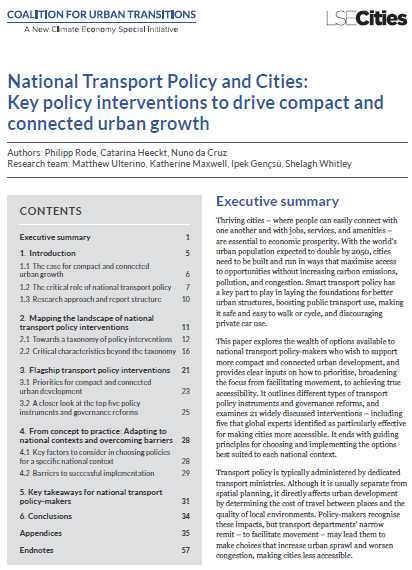National Transport Policy and Cities: Key policy interventions to drive compact and connected urban growth


This paper provides a foundation for national transport policy-makers to begin pragmatic but ambitious conversations about actions they can take to make cities more accessible.
Thriving cities — where people can easily connect with one another and with jobs, services, and amenities — are essential to economic prosperity. With the world’s urban population expected to double by 2050, cities need to be built and run in ways that maximise access to opportunities without increasing carbon emissions, pollution, and congestion. Smart transport policy has a key part to play in laying the foundations for better urban structures, boosting public transport use, making it safe and easy to walk or cycle, and discouraging private car use.
This paper provides a foundation for national transport policy-makers to begin pragmatic but ambitious conversations about actions they can take to make cities more accessible — either by leapfrogging car-centric development pathways, or by transitioning towards a more compact and connected future. There are multiple options to suit every national context — many with broad economic, social and environmental benefits. By seizing these opportunities, countries at all levels of development can reshape urban life for the better for decades to come.